Ex-Tropical Cyclone Jasper shows disaster response in Australia is changing for the better
Tropical Cyclone Jasper developed in the north Coral Sea on 5 December 2023, making landfall as a category 2 Tropical Cyclone near Bloomfield on the north Queensland coast around 8pm AEST, on 13 December, 2023.
Once over land, Tropical Cyclone Jasper de-intensified to a tropical low pressure system and continued slowly westward over the Cape York Peninsular and into the Gulf of Carpentaria.
While there were concerns Ex-Tropical Cyclone Jasper would reintensify as a tropical cyclone, it remained a slow-moving tropical low, however, the system delivered extensive rainfall along the far-north coast of Queensland from December 14-19 and devastated communities in and around Cape York and Cairns, impacting the Local Government Areas (LGAs) of Wujal Wujal, Douglas, Cook and Cairns.
Early January trip to Far North Queensland
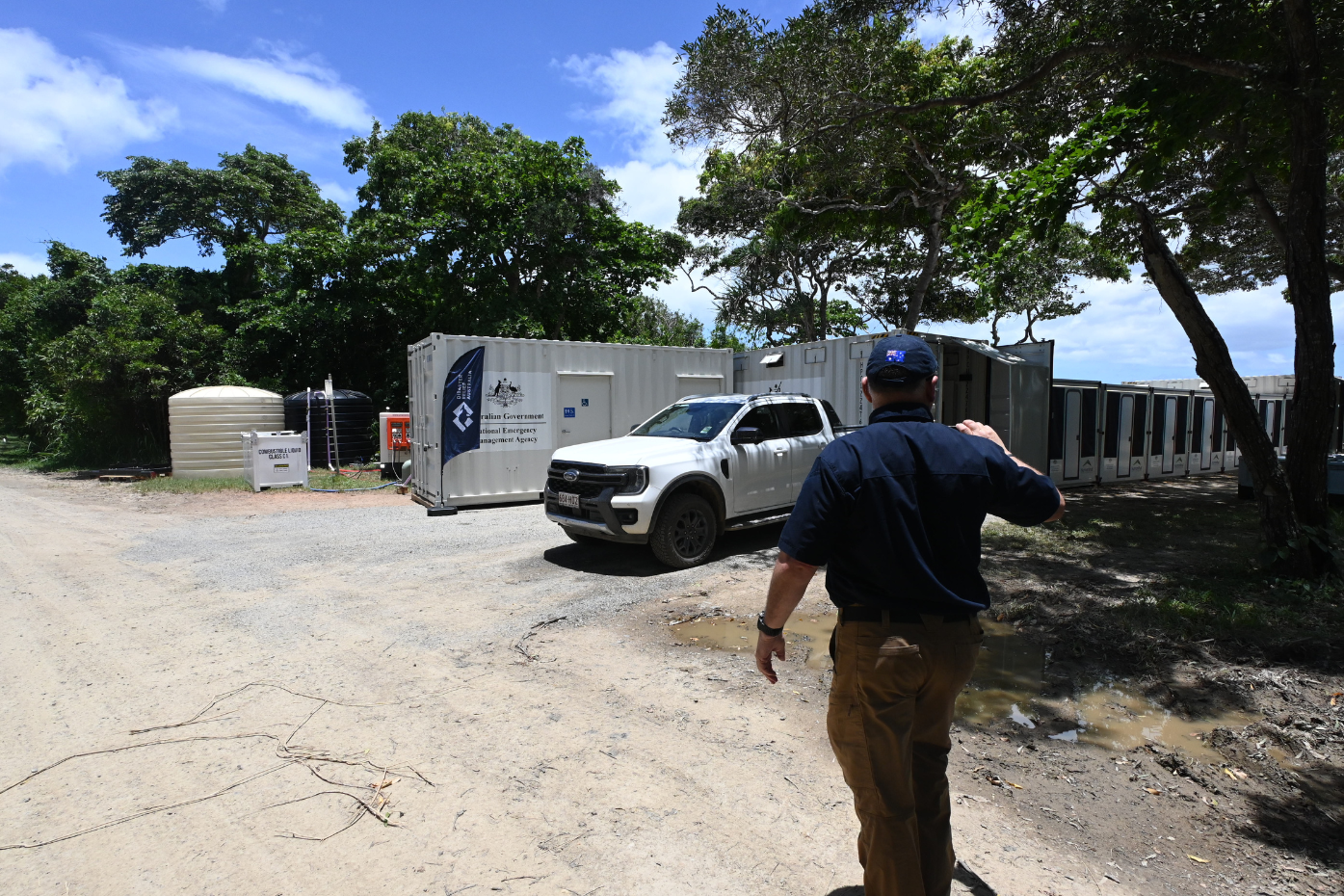
Joe Buffone entering the Humanihuts camp in Far North Queensland, which was deployed under the National Emergency Management Stockpile
In early January, along with a small planning team, we deployed to Far North Queensland, where we worked alongside the Queensland Reconstruction Authority (QRA) to determine the local priorities as well as what assistance the Australian Government could provide.
As a result of that planning, we deployed an Australian Defence Force (ADF) light engineering team, Disaster Relief Australia (DRA), two Chinook heavy lift helicopters, one landing barge, marine logistic planners, and our new emergency shelter capability, the Humanihuts, from the National Emergency Management Stockpile (NEMS), along with the support of a NEMA liaison officer.
The NEMS, which is led by NEMA, is a mechanism the Australian Government uses for the for rapid deployment of disaster response and relief resources across the country. It is designed to augment state and territory capabilities, when their capabilities have been fully committed.
It is the first of its kind in Australia and will continue to evolve – it even has the potential to pre-deploy assets around the country in preparation for disasters that are anticipated to have significant impacts.
Australia Day weekend trip
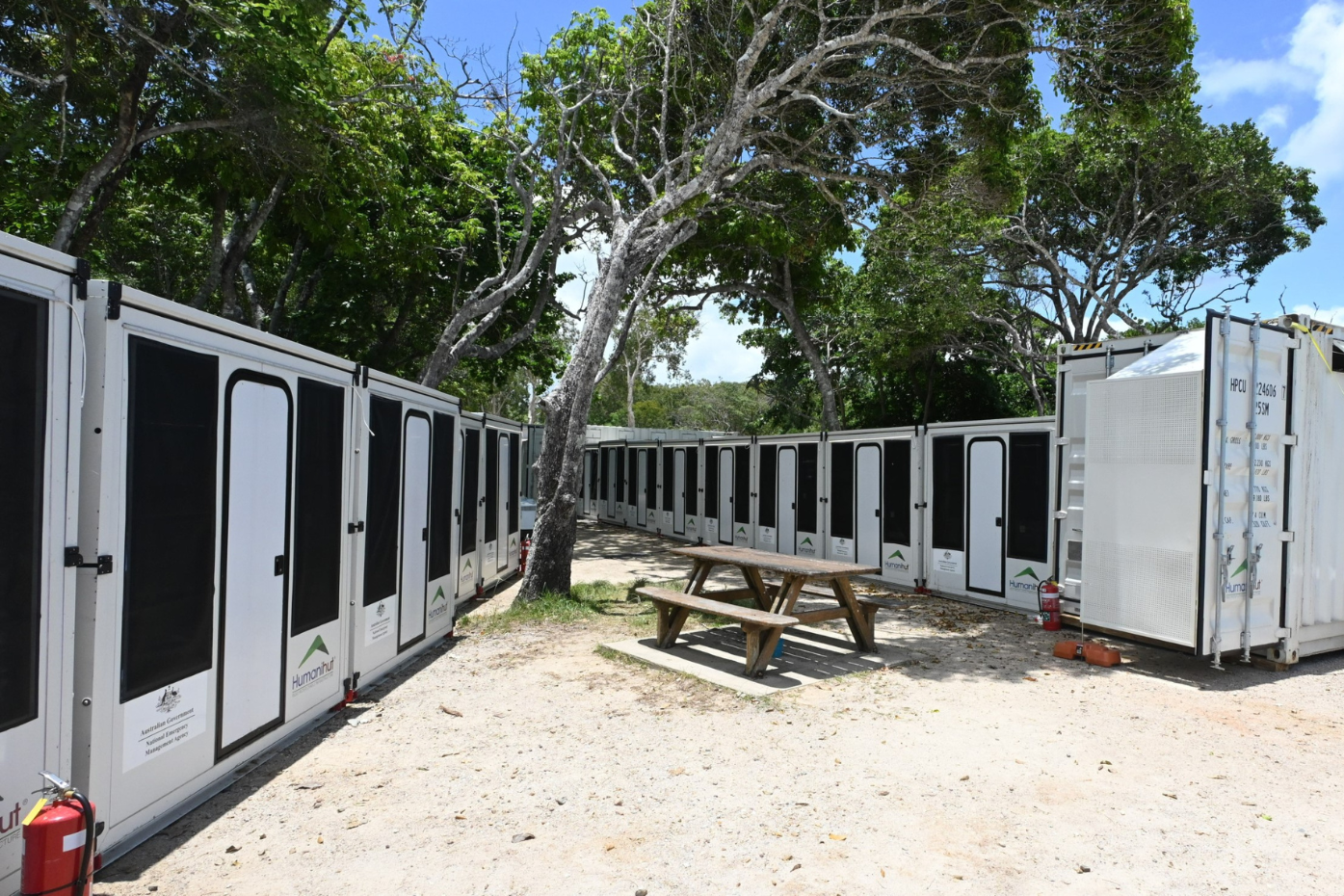
Humanihuts camp in Far North Queensland, which was deployed under the National Emergency Management Stockpile
On the Australia Day weekend this year, I returned to Far North Queensland, this time travelling with Bron Sparkes who is the Director of the NEMS project, and Fred Dangar from DRA, to witness first-hand how communities were progressing on their recovery journey.
While there, I also met with the Mayor of Cook Shire, Cr Peter Scott, and Joshua Paterson, CEO of Jabalbina Yakanji Aboriginal Corporation.
I was incredibly humbled by the amount of work that had been achieved in clearing roads and debris, and noted that a lot remains to be done to get communities functioning and working towards their new norm. It was evident that significant progress had been made thanks the countless people involved in the recovery effort, but in our line of work, we know the road to recovery takes time, resources, and patience.
As part of the trip, we also joined the convoy of DRA teams and witnessed the deployment and management of the Australian Government’s first emergency shelter capability, the Humanihuts, from our new NEMS of critical disaster response and relief assets and resources.
As we followed the vehicles from Wujal Wujal into Bloomfield, the mountains of debris, downed trees and washed-out roads drove home to me the importance of the work we would be supporting, with the aim of getting community back ‘on country’ and helping people to rebuild their lives.
While this disaster was characterised by historic flooding, it was also characterised by new Australian Government-enabled initiatives that boost our national capability to support communities through the states and territories.
On the floor at NEMA, a common theme I hear is that people are proud of how tangible the impacts of their work is during times of crisis, and this disaster – while undoubtedly devastating – is an example of the real impacts that NEMA and its work has on people across the country.
First Deployment of Disaster Relief Australia
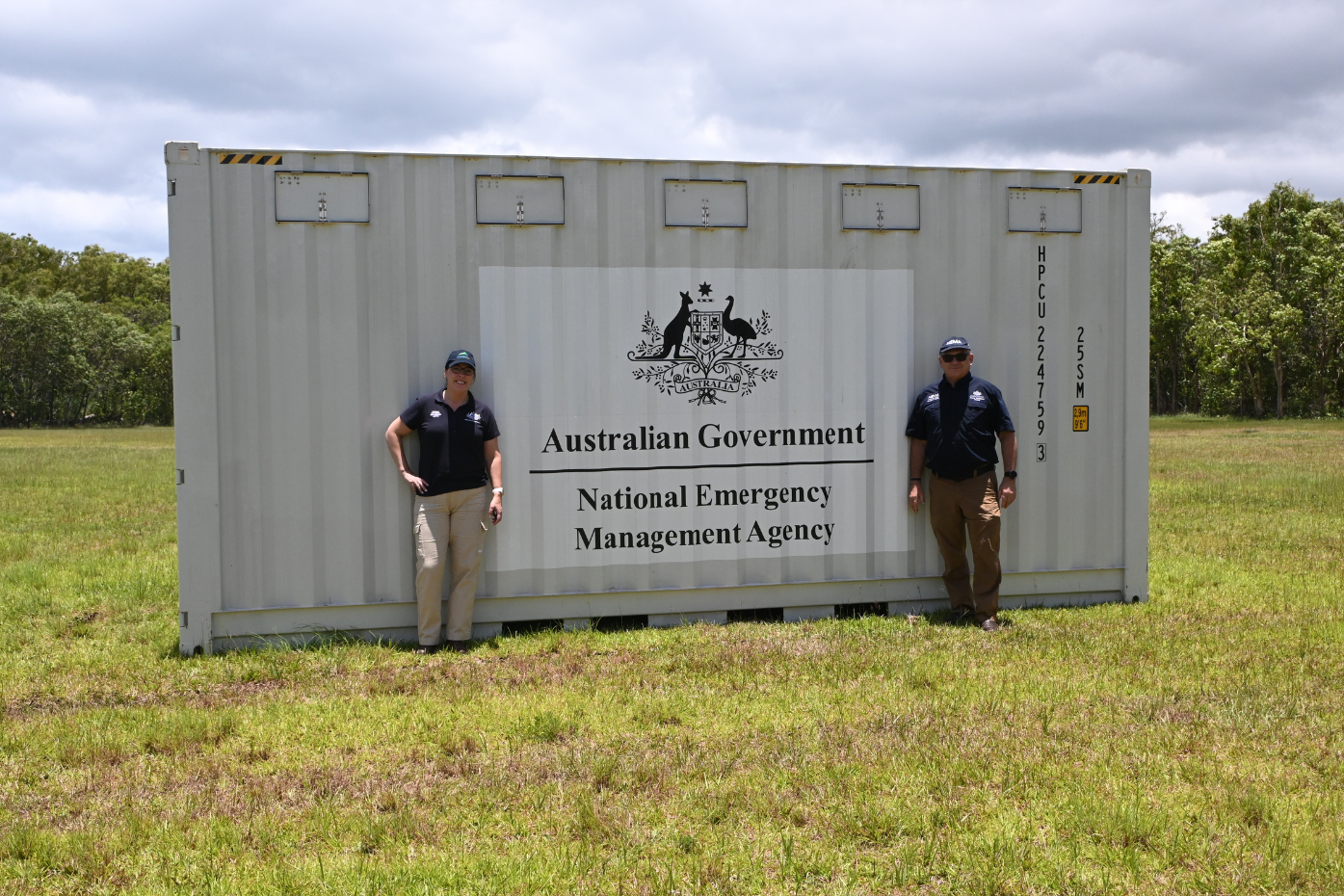
Bron Sparkes, Director of the National Emergency Management Stockpile project, and Joe Buffone in Far North Queensland
The recovery for this event was the first time we deployed personnel from the DRA, an Australian Government supported capability, to the most hard-hit areas.
If you are yet to hear of DRA, it is a veteran-led volunteer organisation that brings together volunteers and trains, equips and organises them to aid during disaster operations. Their volunteers come from a range of background including defence veterans, emergency services and civilian volunteers.
Deploying the DRA reduced the need for ADF involvement, and helped relieve pressure from local emergency services personnel, volunteers, and council staff. The DRA were able to support the assessment of damage, and helped to make communities feel safe again.
Humanihuts deployed for the first time

Humanihuts camp in Far North Queensland, which was deployed under the National Emergency Management Stockpile
In supporting this deployment to affected communities, it was incredibly positive to know that our off-the-grid, self-sustaining emergency accommodation, the Humanihut, would be able to shelter personnel from the weather, provide a place to have a bit of downtime, and enable them to stay near, and work as close as possible with the local community.
I spoke to the Humanihut field manager and discussed observations and learnings from this deployment. It would be fair to say that this was a very challenging deployment, and many hurdles needed to be overcome to get the Australian Government, NEMA, QLD and Local Authorities on-site, and operating together.
I was also very pleased to have the opportunity to sleep in the Humanihut camp overnight. I was very comfortable and relieved to be able to rest in a cool and clean environment, with a very comfortable bed, and access to a shower and toilets.
The Humanihuts are also equipped with laundry facilities, and one further key feature, is the accessible bathroom pod for people with disabilities.
Operation Baird
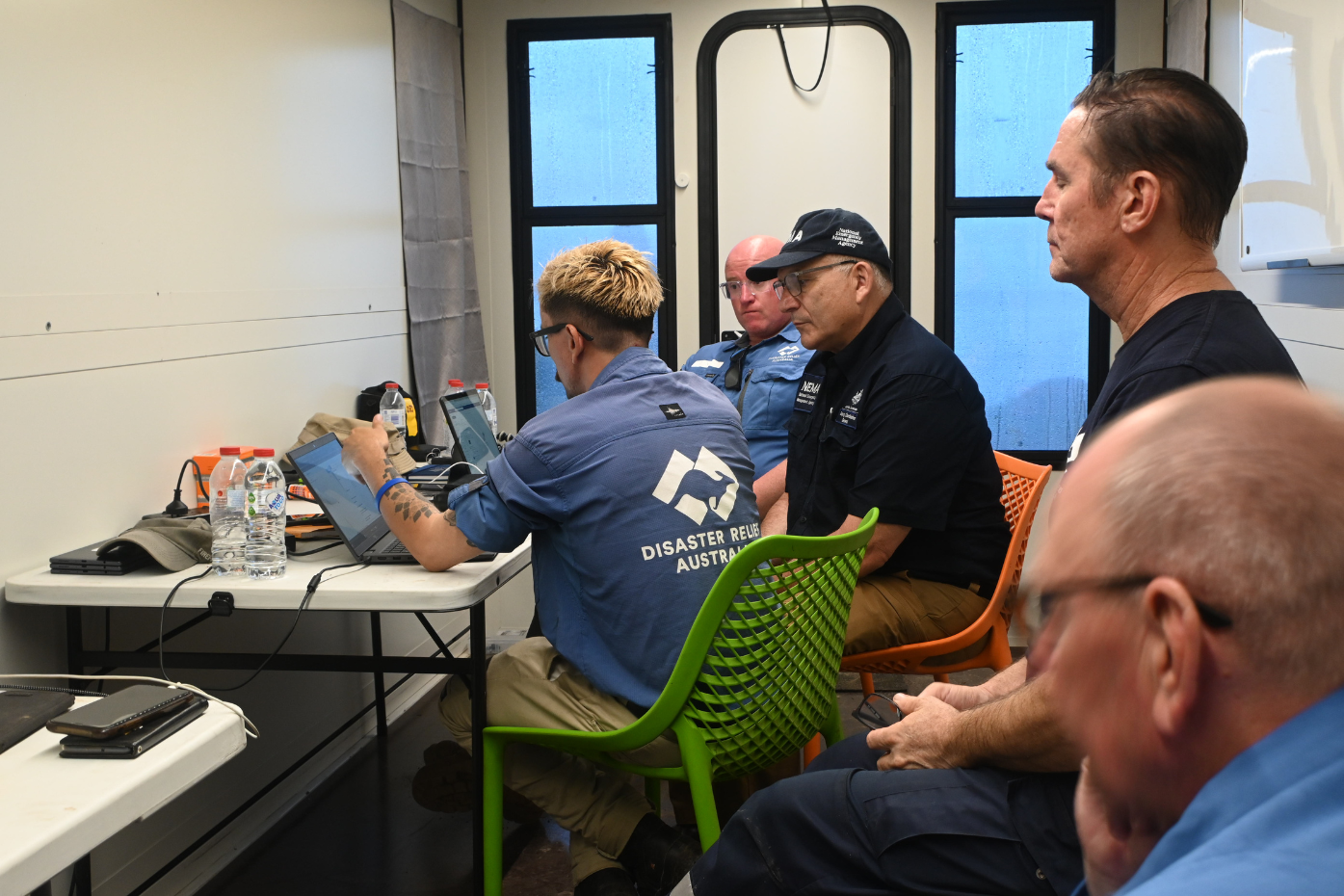
Joe Buffone briefing members of Disaster Relief Australia in Far North Queensland
While in Far North Queensland, I spent time with the veteran-led DRA contingent on Operation Baird over the Australia Day long weekend. I briefed them on the importance of the work they are doing and their partnership with NEMA.
We stepped through the jobs they were doing in early recovery clean-up, their operating and field tasking system, and I was pleased to join them over their ration pack dinners.
We also came ready to be self-sustaining with a can of chilli tuna, red beans and dry biscuits for dinner, purchased from the local general store. I hope the volunteers of DRA, through their selflessness will have a long-lasting effect on the affected communities road to recovery. From what I observed during my trip, they really make a huge difference to local communities.
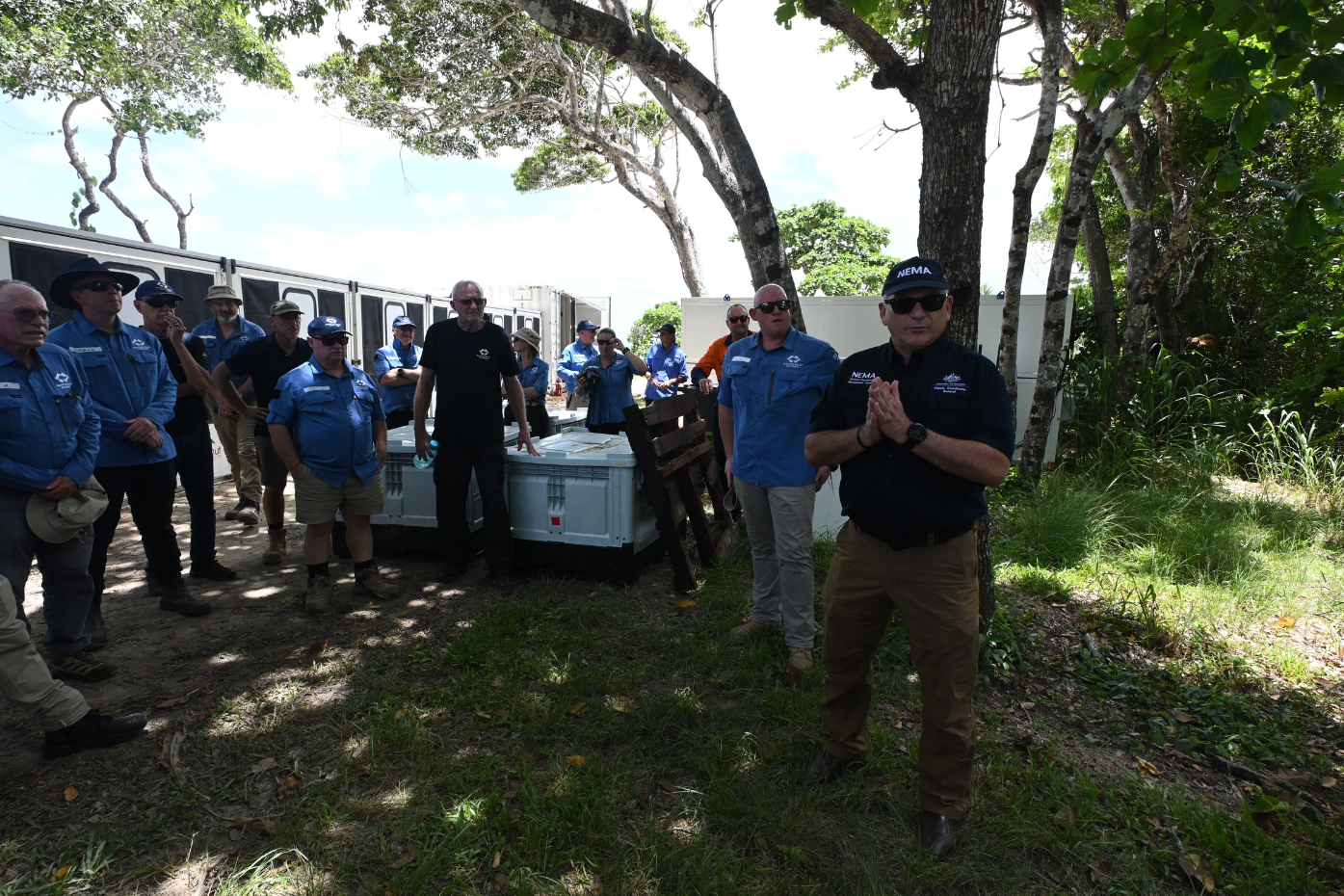
Joe Buffone briefing members of Disaster Relief Australia in Far North Queensland
I am incredibly proud of the work of NEMA does in partnership with Queensland Emergency Management and Recovery agencies and Queensland local governments to support local communities.
All of this support and more, is going to be necessary to help overcome the devastation and impact on communities and individuals, in particular those from Wujal Wujal, as their community is rebuilt with necessary essential services required to allow community back.
Dotti the Dog
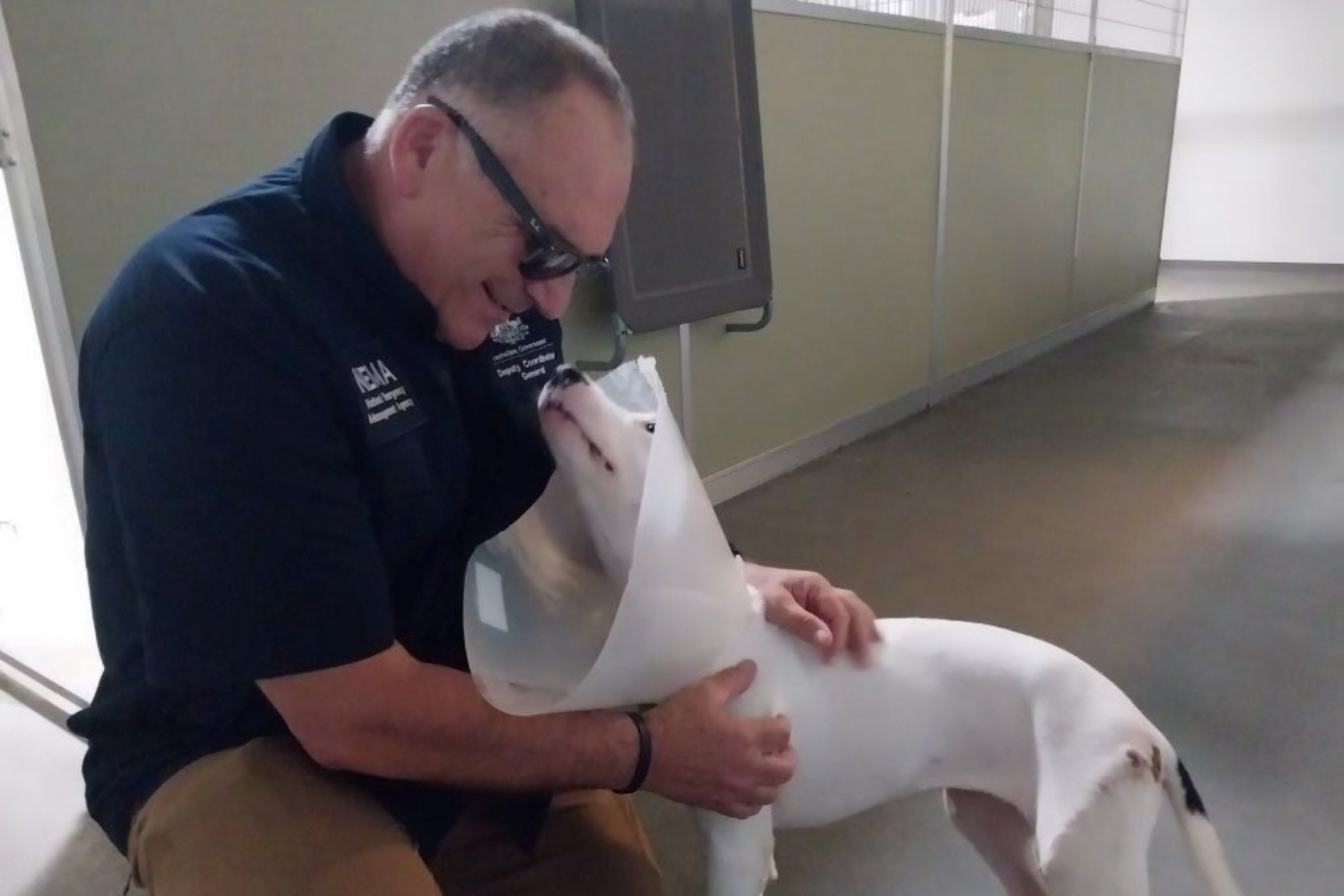
Joe Buffone visiting Dotti the Dog in Far North Queensland following the successful surgery on her severely broken leg
On a very positive note, I had the opportunity to visit Dotti the Dog at the animal shelter. On my earlier visit to far-north Queensland. Dotti was rescued after accidently being run over by a car in Wugal Wugal.
NEMA staff generously raised $1650 in three days towards paying for the operation to repair of her severely broken leg. I can report Dotti is recovering well and was very pleased to see me, albeit briefly. I am very tempted to apply to adopt her.
2023-24 Higher Risk Weather Season
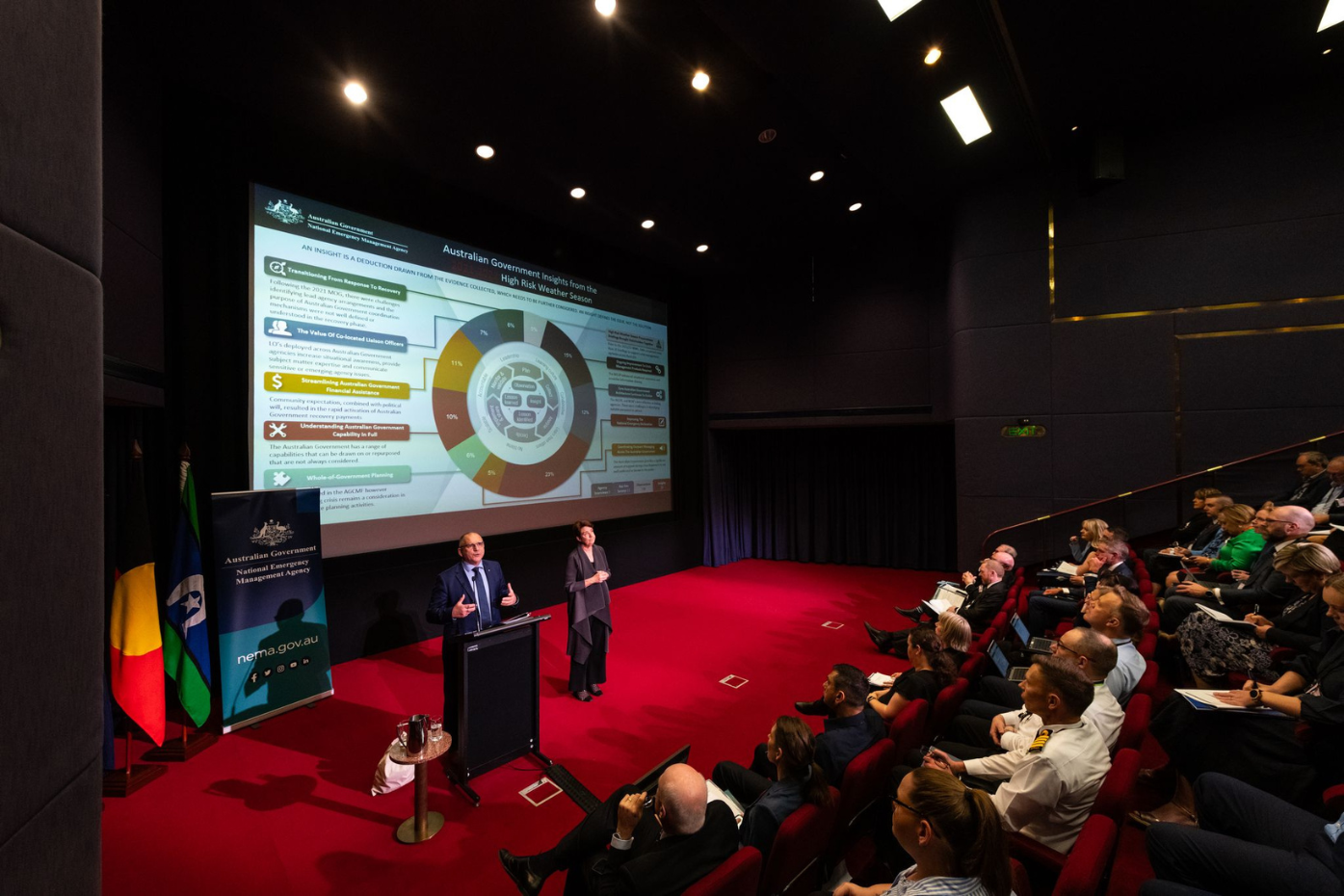
Joe Buffone presenting at the 2023 National Disaster Preparedness Summit
When we held the inaugural National Disaster Preparedness Summit in September last year, the 250 leaders from emergency services, logistics, food and groceries, insurance, energy and utilities, telecommunications and non-government sectors acknowledged that the 2023-24 Higher Risk Weather Season was going to be challenging.
Just three months on, we have seen all levels of government from across the country pull together to respond to nationally significant disasters, activate short-to-medium term financial assistance, and develop long-term resilience initiatives to protect us from future disasters.
NEMA continues to work harder than ever, to be prepared to play its national leadership role in coordinating at the federal level to support states, territories and local government to reduce harm to communities affected by disasters.
Australians have an extensive history of dealing with the wide-reaching impact of natural hazards which as we have all seen, can result in severe disasters.
As a nation, Australians have demonstrated that we are capable of imaginative cooperation and coordination across all levels of government, the private sector and the community. We must continue to adapt, work together and focus on risk reduction to support the prosperity of communities long into the future.
While disasters have, and will continue to challenge us, I am proud of how NEMA has been able to deliver innovative solutions to communities both domestically, and internationally during times of crisis.


